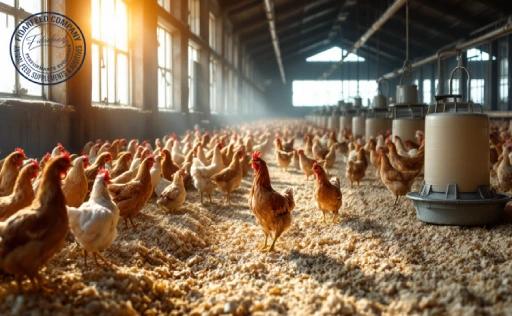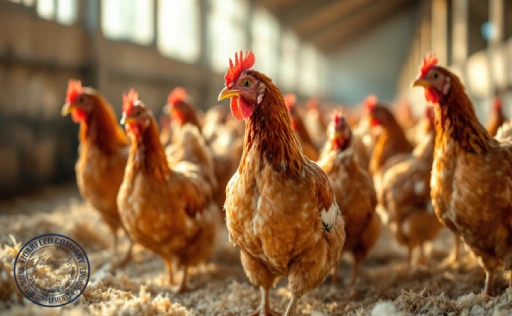Introduction: Why Feeding Methods Matter in Fish Farming
Best Feeding Methods in Fish Farming are more than just a technical choice—they are the foundation of success in aquaculture. Every breeder, whether managing a small pond or a large-scale farm, understands that feed is both the biggest cost and the greatest opportunity for improving growth, health, and profitability. Feeding is not only about filling stomachs; it is about fueling efficient growth, reducing waste, and creating a sustainable farming system. If feeding practices are not optimized, fish may fail to reach their growth potential, feed costs rise, and water quality suffers.
Learn more about: Aquaculture Water & Soil Probiotic
In this guide, we will dive deep into the most effective feeding methods that can help you achieve higher yields while ensuring your fish remain healthy and your farm more profitable.
Understanding the Basics: What Are the Best Feeding Methods in Fish Farming?
When we talk about the Best Feeding Methods in Fish Farming, we are not only referring to how feed is delivered but also how it is selected, timed, and monitored. Good feeding practices bring together three essential elements:
-
The right feed formulation – balanced with protein, fats, vitamins, and minerals.
-
The right feeding technique – ensuring all fish have access to food without excessive waste.
-
The right management system – monitoring fish behavior, growth, and water quality regularly.
Learn more about: Can Probiotics Really Boost Fish Growth in Aquaculture?
Scientific studies confirm that feed alone can account for 40–60% of total fish production costs, which shows why mastering feeding methods is critical. The ultimate goal is to maximize feed conversion efficiency—getting the most growth out of every kilogram of feed.

Choosing the Right Feed: Quality vs. Quantity
Many new farmers believe that giving more feed automatically leads to faster growth. In reality, quality outweighs quantity every time. A diet rich in essential nutrients such as amino acids, fatty acids, and micronutrients supports healthy development, disease resistance, and optimal feed utilization.
For example, carnivorous species like trout and salmon need high-protein diets, while omnivorous species such as tilapia thrive on balanced feeds with moderate protein and carbohydrate content. Choosing a low-quality or unsuitable feed can lead to slow growth, high mortality, or poor feed conversion ratios (FCR).
Learn more about: Reducing Fish Mortality in Aquaculture with Probiotics
Farmers should always look for feeds that float evenly, remain stable in water, and match the mouth size and feeding habits of their fish. The focus should never be just on the amount of feed given but on ensuring every pellet contributes to healthy growth.
Feeding Frequency and Timing: How to Maximize Growth
Feeding fish is as much about when and how often as it is about what is fed. Different species have different natural feeding rhythms. For instance:
-
Tilapia feed best during daylight hours, particularly in the morning and late afternoon.
-
Catfish often show stronger feeding responses in the evening or at night.
Research suggests that feeding multiple small meals rather than one large meal improves nutrient absorption and reduces waste. Over time, this leads to faster growth and better survival rates. Farmers should aim for a feeding schedule that matches the metabolism of their species while also keeping labor and operational costs in mind.

Manual Feeding vs. Automated Feeding Systems
Traditionally, manual feeding has been the norm. Farmers distribute feed by hand or with simple tools, observing fish behavior closely. This method has the advantage of being low-cost and flexible, but it requires time, consistency, and human supervision.
Learn more about: How Are Farmed Fish Fed? Understanding Aquaculture Feeding Practices
In contrast, automated feeding systems deliver feed at programmed intervals or based on demand sensors. They save labor, provide more uniform distribution, and reduce the risk of overfeeding. For large farms, this method can significantly increase efficiency. However, automation requires initial investment and maintenance.
The choice between manual and automated feeding depends on the scale of production, budget, and management style. Many farms successfully combine both, using manual feeding for observation and automated systems for consistent delivery.
Monitoring Fish Behavior to Adjust Feeding Practices
Fish are excellent communicators—if you know how to read their behavior. Active, eager feeding shows that fish are healthy and comfortable, while sluggish or uneven feeding may signal stress, poor water quality, or disease.
Learn more about: The Application of Bentonite in Fish and Shrimp Feed
By closely observing feeding behavior, farmers can adjust the amount of feed provided. For example, if uneaten pellets sink to the bottom after a meal, it is a clear sign that the ration should be reduced. This not only prevents waste but also protects water quality, as excess feed can increase ammonia levels and reduce oxygen.

Avoiding Overfeeding and Underfeeding: Common Mistakes to Prevent
Two of the most common mistakes in aquaculture are overfeeding and underfeeding. Overfeeding increases feed costs and deteriorates water quality, while underfeeding limits growth and may trigger aggression among fish competing for limited food.
Learn more about: Can Probiotics Really Boost Fish Growth in Aquaculture?
Farmers can avoid these problems by following recommended feeding charts based on fish size, species, and growth stage. Regular sampling and weighing of fish are practical ways to ensure feeding amounts remain appropriate as stock grows.
Best Feeding Methods in Fish Farming for Different Species
Different species require different feeding methods:
-
Tilapia: Benefit from surface feeding and regular small rations.
-
Catfish: Prefer bottom feeding; sinking pellets are most effective.
Learn more about: Protect Your Aquatic Life with Probiotics
-
Carp: Omnivorous species that respond well to both natural food and supplemental feeding.
-
Trout: High-energy feeds with frequent small meals improve growth and feed efficiency.
By tailoring methods to species-specific habits, farmers ensure that each group of fish achieves maximum growth potential without wasted feed.

Cost-Effective Feeding Strategies for Higher Profit Margins
Profitability in aquaculture comes down to managing costs while maintaining strong yields. Cost-effective strategies include:
-
Choosing feeds with the best feed conversion ratio (FCR) rather than the cheapest price.
-
Reducing feed waste through better distribution methods.
-
Using feeding trials to determine the most efficient practices on a specific farm.
For example, a farmer who reduces FCR from 2.0 to 1.5 saves half a kilogram of feed for every kilogram of fish produced—multiplying profits over time.
Sustainable Feeding Practices: Boosting Yield While Protecting the Environment
Sustainability is not just a trend; it is becoming essential for long-term success in fish farming. Farmers must think about the ecological impact of feeding methods. Overfeeding leads to nutrient pollution, while poor-quality feeds may degrade water ecosystems.
Adopting sustainable practices, such as precision feeding, natural feed supplements, and eco-friendly feed formulations, ensures both high yield and environmental responsibility. Balanced systems protect water quality, reduce disease outbreaks, and improve farm reputation.

Conclusion: Adopting the Best Feeding Methods for Long-Term Success
The Best Feeding Methods in Fish Farming are not a one-size-fits-all solution—they are a combination of the right feed, timing, observation, and management strategies tailored to each farm and species. By focusing on quality feed, proper frequency, species-specific practices, and sustainable methods, farmers can achieve higher yields, healthier fish, and better profitability.
Every breeder, whether new or experienced, has the power to transform results simply by improving feeding practices. What about you? Have you tried different feeding strategies on your farm? Share your experiences, ask questions, and join the conversation—we’d love to hear your thoughts.




